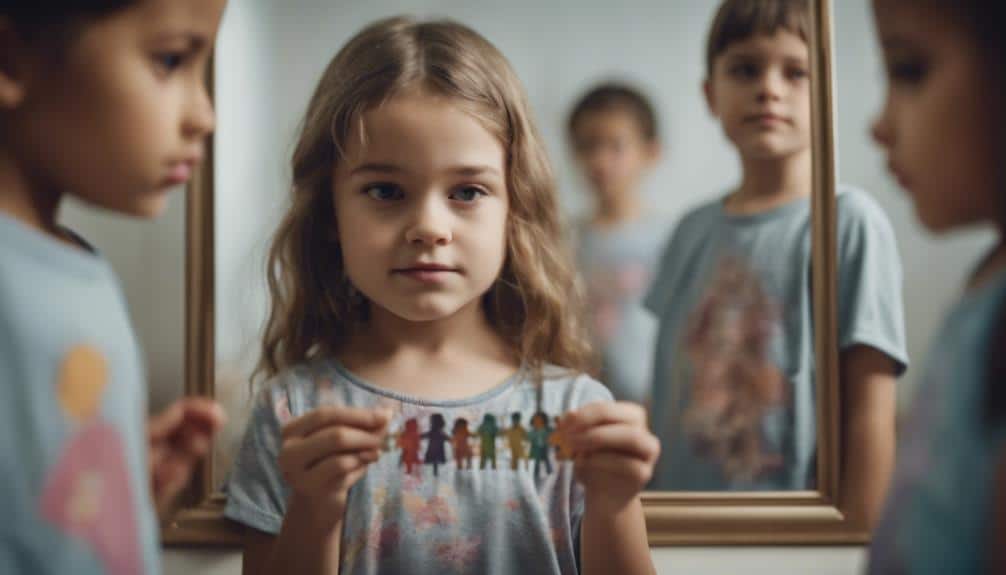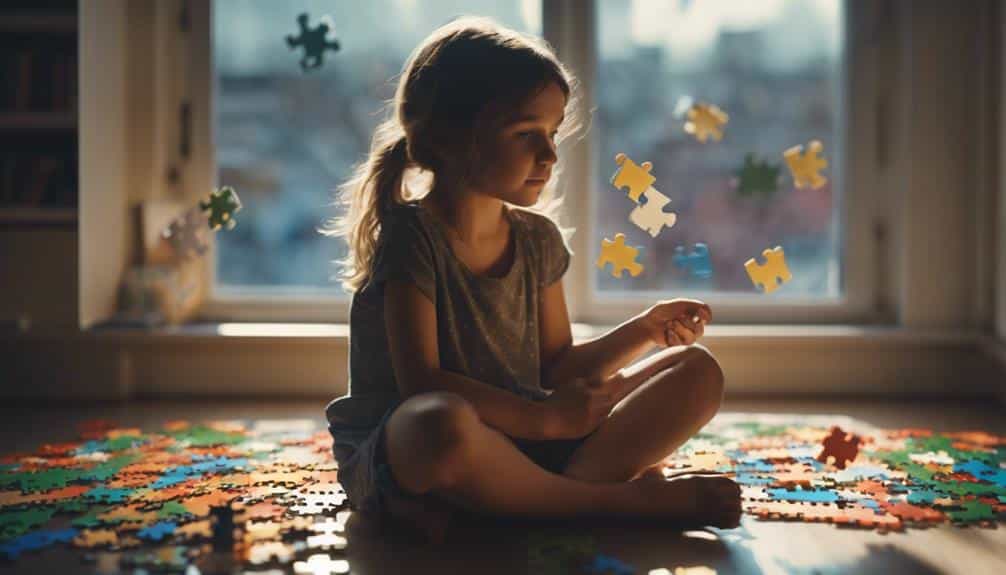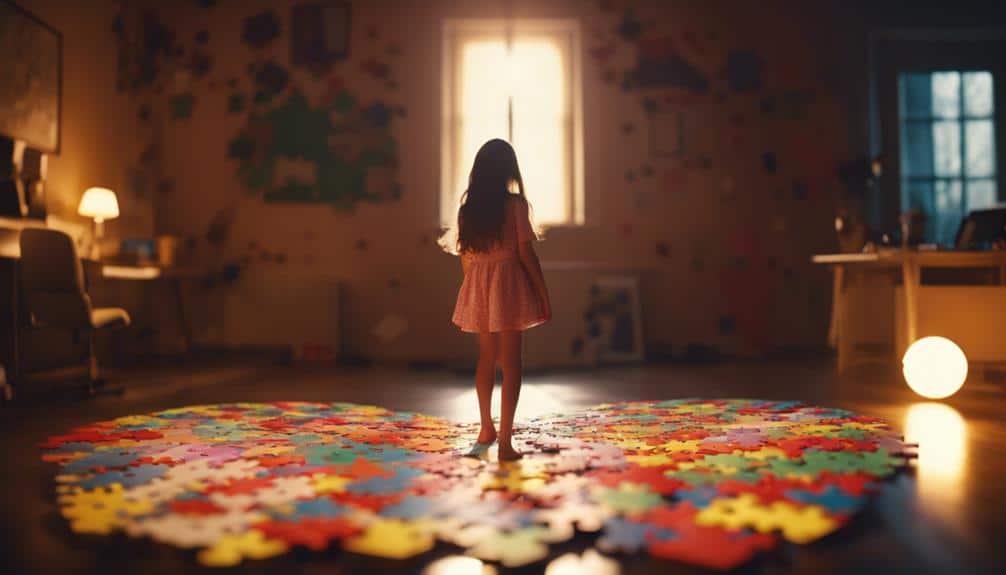Unlocking autism in girls means understanding how it shows up differently in them compared to boys. Often, girls don’t get diagnosed because people don’t recognize their signs. They might be good at blending in or seem shy, but inside, they might struggle with things like making friends or handling noisy places.
It’s essential to learn more about how autism affects girls so we can give them the support they need. By recognizing their unique challenges and helping them feel understood, we can create a world where autistic girls feel empowered and included. To unlock autism means breaking the cycle of misunderstanding and giving girls the tools they need to thrive.
We can make a big difference in their lives by paying attention to their specific needs, like how they rely on social cues or have strong feelings about certain sounds or textures. Together, we can create a world where every girl with autism feels seen, heard, and supported.
Key Takeaways
- Autism manifests differently in girls, often leading to underdiagnosis and delayed support.
- Girls with autism may excel in masking their difficulties, complicating recognition and diagnosis.
- Sensory sensitivities can be intense in girls with autism, affecting daily life significantly.
- Social communication challenges are familiar, yet girls may rely heavily on learned social cues.
- Creating supportive environments that recognize and accommodate the unique needs of girls with autism is crucial for their well-being and development.
Unlocking Autism Misconceptions in Girls
Why do so many girls with autism go undiagnosed, and what misconceptions contribute to this oversight? Historically, the narrative around autism has been heavily skewed towards male presentations, leaving girls in the shadows of understanding and support. This gender bias stems from early research and diagnostic criteria that were primarily based on studies of boys, inadvertently creating a diagnostic model that fits males more closely.
As a result, the distinct ways autism manifests in girls—often subtler and socially camouflaged—are overlooked or misinterpreted by professionals and caregivers alike. This oversight not only perpetuates the cycle of underdiagnosis but also denies many girls the opportunity to receive the understanding and assistance they deserve, further emphasizing the need for a more inclusive and nuanced approach to autism recognition.
Identifying Signs in Girls
Understanding the nuanced signs of autism in girls is essential for early diagnosis and support, as these indicators can differ significantly from those traditionally associated with boys. Girls may rely on others for social cues or communication, showing a distinctive sensitivity to sensory environments that can overwhelm or discomfort them. Their interests often manifest intensely but within a narrow scope, potentially leading to challenges in forming and maintaining diverse friendships.
Such friendships can be further strained by difficulties in social communication, where conversations may revolve tightly around specific topics. Additionally, signs like shyness, quietness, or seeming passivity can mask underlying struggles with emotional regulation and accompanying feelings of depression or anxiety. Recognizing these signs with empathy and inclusivity paves the way for belonging and support.
Stereotypes and Recognition

Stereotypes surrounding autism, especially in girls, greatly hinder the timely and accurate recognition of this condition, impacting their ability to receive necessary support and understanding. The nuanced presentation of autism in girls often slips through the diagnostic cracks due to prevailing stereotypes and misconceptions.
- Gender Bias in Diagnosis: The prevailing model of autism is heavily based on male presentations, leaving girls underdiagnosed.
- Subtle Manifestations: Girls often exhibit less overt symptoms, such as quieter repetitive behaviors, which can be easily overlooked.
- Masking Abilities: Social adaptation skills in girls can mask underlying challenges, leading to late or missed diagnoses.
- Societal Expectations: Stereotypes about how girls ‘should’ behave further obscure the recognition of autism, compounding the challenge of securing support.
Understanding these barriers is vital for fostering an inclusive, supportive environment that recognizes and values the unique experiences of autistic girls.
Behavior Across Environments
Autistic children often display different behaviors across various environments, illustrating the intricate interplay between their unique coping mechanisms and external expectations. This variability is especially noticeable in girls, who may navigate social landscapes by embracing a chameleon-like adaptability. At school, the pressures to conform and the demanding requirements of structured learning can result in coping strategies such as masking, where autistic traits are intentionally hidden in an attempt to blend in.
Conversely, the home environment might provide a haven where these individuals feel comfortable expressing their authentic selves, including any frustrations or stimming behaviors suppressed elsewhere. Recognizing these adaptive behaviors is essential for creating supportive and inclusive environments that validate autistic girls’ identities, fostering a sense of belonging and understanding.
Understanding Sensory Sensitivities

Sensory sensitivities in individuals with autism, particularly females, often manifest through an intense response to everyday stimuli, impacting their daily interactions and overall well-being. This heightened sensory perception can significantly influence how girls with autism navigate their environment, necessitating a deeper understanding and supportive measures.
- Auditory Sensitivities: Loud or unexpected noises may cause distress or anxiety, challenging social and educational settings.
- Tactile Sensitivities: A preference or aversion to certain textures can influence clothing choices and physical contact comfort levels.
- Visual Sensitivities: Bright lights or visually busy environments might be overwhelming, necessitating accommodations.
- Olfactory and Taste Sensitivities: Strong smells and tastes can be either intriguing or repulsive, affecting dietary preferences and behavior in social settings.
Recognizing these sensitivities is essential for creating inclusive, supportive environments that foster belonging and well-being.
The Social Landscape
Traversing the social landscape poses particular challenges for girls with autism, as they frequently face barriers that impede their capacity to establish meaningful connections and grasp social cues. Their journey through social interactions is not straightforward but requires understanding, patience, and support from those around them. To foster a society that embraces differences and promotes inclusivity, it’s essential to acknowledge the distinctive social experiences of autistic girls.
| Challenge | Potential Support |
|---|---|
| Grasping social cues | Social skills training |
| Forming connections | Peer mentorship programs |
| Navigating friendships | Inclusive social groups |
Emotional Challenges Faced

Traversing the intricate landscape of emotions presents a significant challenge for girls with autism, as they often encounter difficulties in comprehending and articulating their feelings in a way that aligns with societal expectations. Their essential challenges can profoundly impact their sense of belonging and self-worth. Acknowledging and understanding these challenges is vital for fostering an inclusive and supportive environment.
- Difficulty Reading Social Cues: Misinterpreting non-verbal signals can lead to emotional distress and misunderstandings.
- Heightened Sensitivity: Overwhelming emotional responses to sensory stimuli or social situations.
- Emotional Regulation: Struggles with managing intense emotions can result in sudden mood changes.
- Social Isolation: Feelings of loneliness and alienation due to challenges forming meaningful connections.
Embracing these aspects with empathy and support can significantly enhance their emotional well-being and sense of belonging.
Addressing Diagnosis Challenges
Understanding the psychological challenges faced by girls with autism underscores the importance of refining diagnostic approaches to recognize better and support their individual needs. The journey to accurately diagnose autism in girls is fraught with hurdles, primarily due to prevalent misconceptions and stereotypical views of how autism manifests. Typically, diagnostic models are male-centric, overlooking the nuanced expressions of autism in girls, such as their subtler social difficulties and particular interests.
This oversight leaves many girls without the support and understanding they crave. Embracing a more inclusive diagnostic framework—one that accounts for gender differences in autism presentation—is essential. Such a shift would not only advance professional understanding but also foster a sense of belonging among autistic girls, ensuring they receive the tailored support they deserve.
Frequently Asked Questions
How Can Parents and Educators Support Autistic Girls in Developing Their Personal Identity and Self-Esteem?
To support autistic girls in nurturing their identity and self-esteem, parents and educators should create inclusive environments that celebrate distinct differences, encourage self-expression, and provide tailored support for their particular challenges and strengths.
What Are the Long-Term Impacts of Late Diagnosis or Misdiagnosis of Autism in Girls on Their Mental Health and Career Opportunities?
Late diagnosis or misdiagnosis of autism in girls can significantly impair their mental health, leading to heightened rates of anxiety and depression. It may also hinder their career progression by limiting access to tailored support and opportunities.
How Can Autistic Girls’ Unique Strengths and Talents Be Identified and Nurtured in an Educational Setting That Often Emphasizes Conformity?
To foster autistic girls’ distinct strengths in an education system favoring uniformity, schools must adopt inclusive, differentiated teaching strategies that recognize and nurture diverse talents, ensuring an environment where every student feels valued and understood.
What Role Do Peers and the Community Play in the Social Development of Autistic Girls, and how can positive interactions be facilitated?
Peers and the community greatly influence the social development of autistic girls by offering acceptance and understanding. Creating inclusive environments and promoting positive interactions can bolster their confidence and foster meaningful relationships, which is essential for their growth and well-being.
How Do Cultural and Societal Expectations of Femininity and Gender Roles Affect the Recognition and Support of Autism in Girls?
Cultural and societal expectations, akin to a tightrope, greatly influence the recognition and support of autism in girls, often overshadowing their needs with gender norms and hindering equitable diagnosis and empathetic understanding.
Conclusion
Parents of girls with autism face unique challenges in understanding and supporting their children. Autism spectrum disorder (ASD) affects girls differently than boys, often leading to underdiagnosis or misdiagnosis. Despite advances in autism research, there is still a gender bias in the perception of autism, with more focus on males in the autism discourse.
Recognizing the signs of autism in girls can be difficult due to differences in presentation. Girls may exhibit common traits like difficulties in social communication and behavioral patterns, but these may manifest differently from autistic males. This can delay proper diagnosis and access to interventions and therapies, impacting the quality of life for autistic females.
Parents play a crucial role in advocating for their daughters and ensuring they receive the support they need at home, in school, and within the autism community. By understanding the distinct characteristics and needs of girls with autism, parents can empower their daughters to thrive and lead fulfilling lives.


Recent Comments